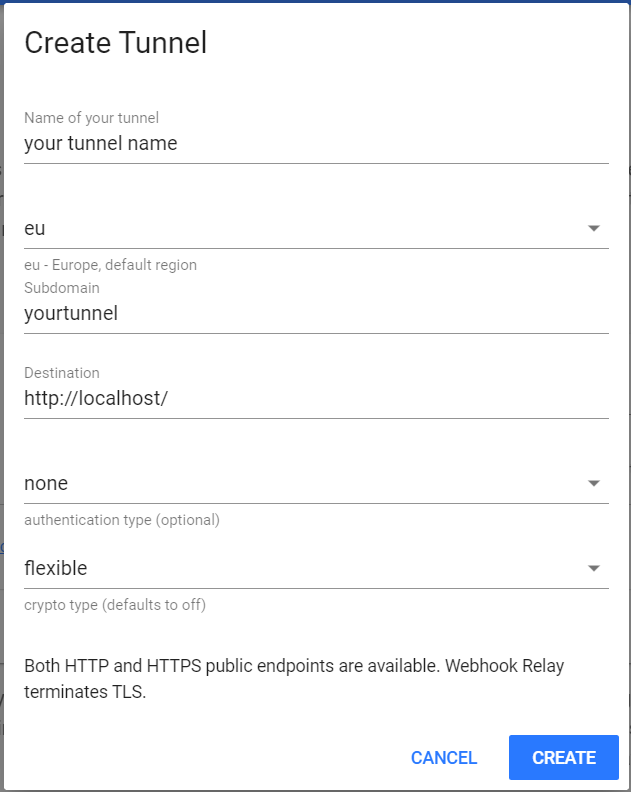Run drone locally or remotely with a web relay to access it from anywhere.
This is for small projects that require a CI when you don't want to create infrastructure in the cloud to get up and running.
This project requires Docker, a Webhook Relay account, and a Github account.
Add required environment variables. If missing from the environment, you will be prompted to enter any missing variables.
| Variable | Description |
|---|---|
| DRONE_ADMIN | Github user that will be the drone admin |
| DRONE_GITHUB_CLIENT_ID | Github OAuth app client id |
| DRONE_GITHUB_CLIENT_SECRET | Github OAuth app client secret |
| RELAY_KEY | Web Relay access key |
| RELAY_TOKEN | Web Relay access token |
| RELAY_HOST | Web relay host url |
To create the DRONE_GITHUB_CLIENT_ID and DRONE_GITHUB_CLIENT_SECRET follow the Github OAuth app instructions.
To create the relay tunnel go to https://my.webhookrelay.com/tunnels like the following:
Replace tunnel name and subdomain with your tunnel name and subdomain. All of the other fields should match the screenshot. The subdomain will become the prefix to the RELAY_HOST. Once the tunnel is created you will see the entire host url in the table.
To create the RELAY_KEY and RELAY_TOKEN go to https://my.webhookrelay.com/tokens and follow the instructions for creating an access token. Add the name of your tunnel to the access token tunnel whitelist.
Run start-drone.sh.
This will start the drone server and agent. Then it will connect the drone server with the web relay. You should now be able to connect to the drone server using the RELAY_HOST url from any device.
If deploying to an ec2 instance the web relay can be ignored if you're planning to use a route 53 alias for the ec2 instance.
- This is not setup to use HTTPS, do not add secrets through the web relay in the browser or through the cli using the web relay as the drone server url.
- Traffic is not encrypted. Add secrets by accessing the browser frontend via
localhost/or using the drone CLI using localhost as the drone server.
- Traffic is not encrypted. Add secrets by accessing the browser frontend via
DRONE_RUNNER_CAPACITYis set to 2 by default, but this can be tweaked inside docker-compose.yml
